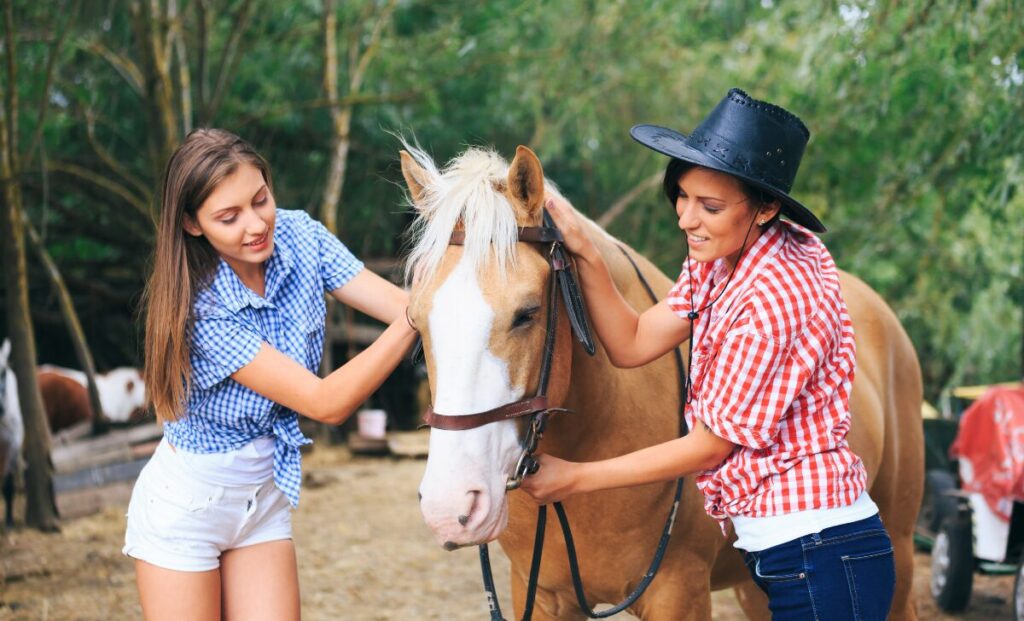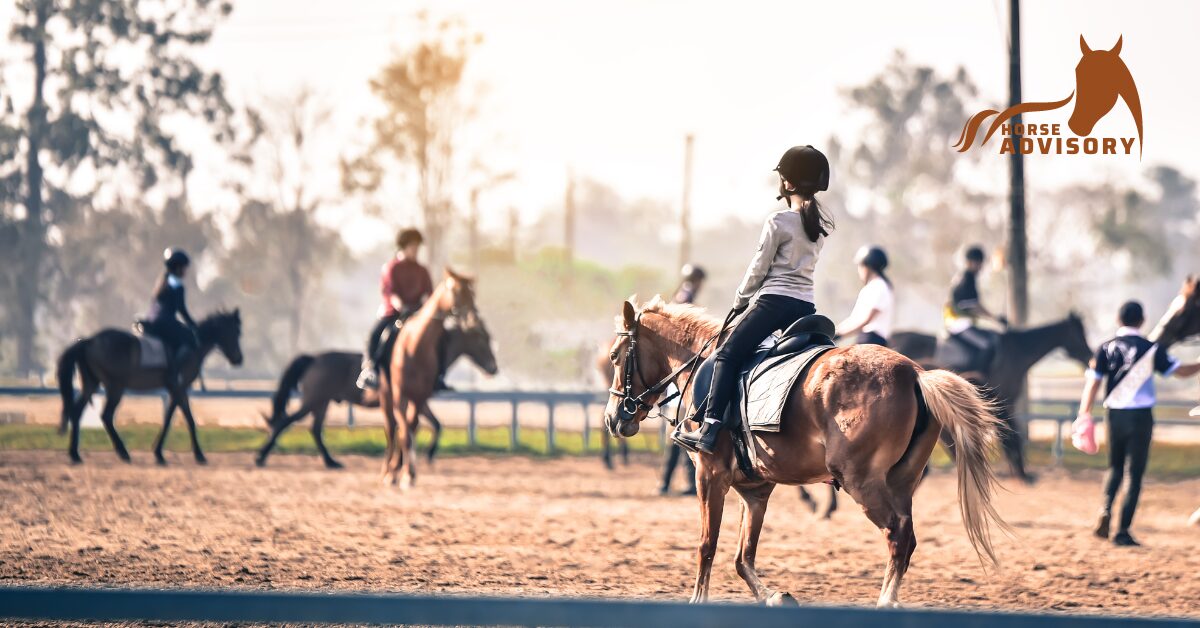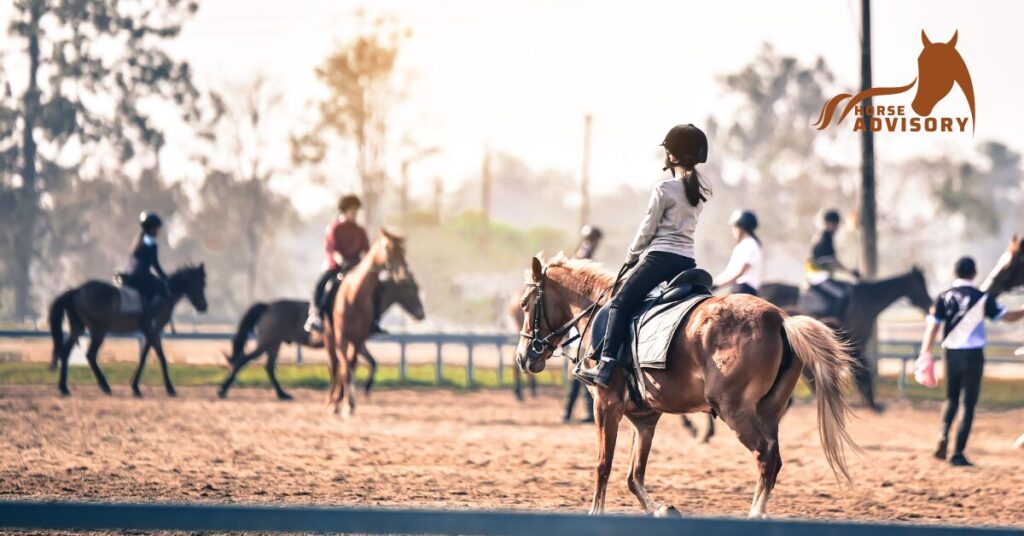Trail riding offers a unique opportunity to connect with nature, explore scenic trails, and forge a deeper bond with your horse. However, embarking on a successful trail ride requires careful preparation to ensure the safety and enjoyment of both rider and equine companion. In this guide, we’ll walk you through the essential steps to prepare your horse for the adventure of trail riding.
Understanding Your Horse and Equipment
Before embarking on your trail adventures, it’s essential to delve into the nuances of understanding your horse and selecting the right equipment. Taking the time to grasp your horse’s temperament, fitness level, and individual preferences or sensitivities sets the stage for a harmonious and enjoyable ride. Equally critical is ensuring that your tack and equipment are meticulously chosen and properly fitted to guarantee a comfortable experience for both you and your equine companion.
A crucial aspect of preparing for your ride involves familiarizing yourself with your horse’s temperament. Understanding how your horse reacts to various stimuli, their comfort levels with unfamiliar environments, and any potential triggers can help you anticipate and navigate situations effectively during your trail excursion. By tuning into your horse’s behavioral cues and responses, you can establish a deeper connection and enhance the overall riding experience.
Assessing your horse’s fitness level is another key consideration before setting out on the trail. Ensuring that your horse is in good physical condition and adequately prepared for the demands of the ride can prevent unnecessary strain or fatigue. Gradually conditioning your horse through regular exercise and training can help build endurance, strength, and agility, contributing to a safer and more enjoyable riding experience for both rider and horse.
In addition to understanding your horse, paying attention to the fit and condition of your tack and equipment is paramount. Properly fitting saddles, bridles, and other gear are essential for preventing discomfort, chafing, or injury during the ride. Regularly inspecting and maintaining your equipment, including checking for loose stitching, worn leather, or damaged components, ensures that everything is in optimal working condition for a smooth and safe journey.
Moreover, considering protective gear such as boots or leg wraps can provide an extra layer of defense for your horse’s legs, particularly in rugged or uneven terrain. These accessories can help minimize the risk of injuries from abrasions, impacts, or uneven footing, safeguarding your horse’s well-being and enhancing their comfort throughout the ride.
By prioritizing the understanding of your horse’s needs, selecting appropriate equipment, and taking proactive measures to ensure comfort and safety, you set the stage for an enriching and fulfilling trail riding experience. This thoughtful approach not only enhances the bond between rider and horse but also fosters a sense of confidence and assurance as you embark on your equine adventures.
Physical Conditioning and Training
A cornerstone of a rewarding trail riding experience lies in the physical preparedness of your horse. By progressively elevating your horse’s exercise routine, you can bolster their stamina, muscle strength, and overall fitness, equipping them for the challenges of diverse terrain and prolonged rides.
Incrementally increasing exercise intensity and duration allows your horse to acclimate gradually, reducing the risk of strain or fatigue during demanding trail adventures.
Integrating a well-rounded training regimen tailored to your horse’s needs is instrumental in honing their physical capabilities. Engaging in a mix of cardiovascular exercises, strength training, and flexibility drills can enhance your horse’s agility, endurance, and balance, preparing them for the rigors of trail riding. By customizing the training plan to suit your horse’s current fitness level and gradually intensifying the workouts, you cultivate a foundation of physical resilience that translates into a more enjoyable and sustainable riding experience.
Beyond physical conditioning, the significance of ground training exercises cannot be overstated in fostering effective communication and trust between you and your equine companion. Groundwork drills, such as leading exercises, desensitization practices, and obstacle courses, serve to strengthen the bond between horse and rider, instilling obedience, respect, and responsiveness in preparation for the trail.
By cultivating mutual understanding and establishing clear communication cues through ground training, you set the stage for a harmonious and cooperative partnership on the trail, enhancing safety, confidence, and enjoyment for both you and your horse.

Trail Ride Preparation
Before you head out on your trail ride, it’s important to help your horse become comfortable with the various obstacles and surprises they might come across, like crossing water, going over bridges, or encountering wildlife. Introduce them to the idea slowly, starting with simple trails and then moving on to longer or more exciting routes as they build confidence.
Make sure you have all the necessary supplies for both you and your horse to have a safe and enjoyable ride. Bring along water to stay hydrated, snacks for energy, a first aid kit for emergencies, and a map of the trail area so you don’t get lost. Being prepared with these basics ensures you can focus on having a great time exploring the outdoors with your equine friend.
Riding Etiquette and Safety
Show respect for fellow trail users by practicing good manners and adhering to trail etiquette. Yield to hikers and bikers, stay on designated paths to protect wildlife habitats, and minimize your impact on the environment by leaving no trace of your passage. By being considerate and mindful of others sharing the trail, you contribute to a harmonious outdoor experience for all.
Safety should always be a top priority when embarking on a trail ride. Equip yourself with essential safety gear, including a properly fitted helmet to protect your head in case of a fall. Consider outfitting your horse with protective gear, such as leg wraps or boots, to safeguard their legs from potential injuries during the ride. Prioritizing safety gear ensures that you and your equine partner can enjoy the trail with peace of mind and confidence.
Be ready for unexpected situations by carrying essential items that can aid in emergencies. Ensure your phone is fully charged and easily accessible for communication. Keep a whistle handy to signal for help if needed, particularly in remote areas. Additionally, inform someone trustworthy about your planned route and estimated return time, providing an extra layer of security in case of unforeseen delays or emergencies. By proactively preparing for unexpected scenarios, you enhance your safety and readiness for any challenges that may arise during your trail adventure.
Post-Ride Care and Reflection
After a fulfilling trail ride, it’s crucial to tend to your horse’s well-being in the aftermath. Start by cooling your horse down properly, allowing them to gradually return to a relaxed state after the physical exertion of the ride. Check for any signs of fatigue or injury, such as lameness or swelling, and address them promptly to ensure your horse’s continued health and comfort. Provide a comfortable resting area for your horse to recuperate, offering ample water and a cozy shelter where they can relax and unwind after the ride.
Reflecting on the trail ride experience is equally essential for personal growth and enhancing future outings with your horse. Take a moment to consider what aspects of the ride went smoothly and contributed to a positive experience. Identify areas for improvement, whether in communication, handling obstacles, or building trust with your horse, to refine your skills and foster a stronger partnership.
Reflecting on each ride allows you to learn from your experiences, adapt your approach, and further cultivate the bond between you and your equine companion. By embracing post-ride care and reflection as integral parts of your trail riding routine, you not only nurture your horse’s well-being but also elevate your riding proficiency and deepen the connection with your beloved equine partner.
Conclusion
By investing time in preparation, training, and care, you can set the stage for memorable trail rides that enrich your bond with your horse and offer unforgettable adventures in the great outdoors. Embrace the journey of trail riding as not just a recreational activity but a shared experience that deepens your connection with your equine companion and the natural world around you.





